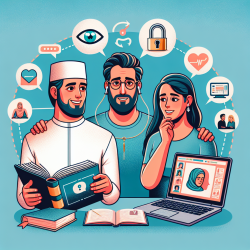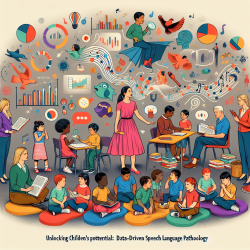The COVID-19 pandemic has significantly impacted the education sector, particularly in the realm of remote therapy and learning. According to the research article "The retention challenge in remote therapy and learning seen through the lens of the COVID-19 pandemic" by Aboujaoude, Gega, and Saltarelli (2021), maintaining student engagement in remote settings is a critical challenge that educators and therapists must address.
As a Special Education Director, understanding and implementing the findings from this research can help you improve your remote therapy practices and increase student retention. Here are some key takeaways from the study and practical strategies you can apply:
1. Foster a Sense of Community
The research highlights the importance of creating a supportive and inclusive online environment. Students are more likely to stay engaged when they feel connected to their peers and instructors. Here are some ways to foster a sense of community:
- Encourage group activities and discussions.
- Use breakout rooms for smaller group interactions.
- Implement peer mentoring programs.
2. Personalize Learning Experiences
Personalization is crucial in remote therapy and learning. Tailoring sessions to meet individual needs can significantly improve engagement and retention. Consider the following approaches:
- Conduct regular assessments to identify each student's strengths and areas for improvement.
- Customize learning materials and activities based on assessment results.
- Provide one-on-one support when necessary.
3. Leverage Technology Effectively
The effective use of technology can enhance the remote learning experience. The study suggests utilizing various digital tools to keep students engaged. Here are some recommendations:
- Incorporate multimedia resources such as videos, interactive quizzes, and virtual simulations.
- Use learning management systems (LMS) to organize and track student progress.
- Implement gamification elements to make learning more enjoyable.
4. Maintain Consistent Communication
Regular and transparent communication is vital in remote settings. Keeping students and parents informed can help build trust and engagement. Consider these strategies:
- Schedule regular check-ins with students and parents.
- Provide timely feedback on assignments and progress.
- Use multiple communication channels, such as emails, phone calls, and video conferences.
5. Address Mental Health and Well-being
The pandemic has taken a toll on the mental health of many students. The research emphasizes the need to address these challenges to improve retention. Here are some ways to support student well-being:
- Incorporate mental health resources and support into your programs.
- Encourage students to practice self-care and mindfulness.
- Provide access to counseling and therapy services.
Implementing these strategies can help you overcome the retention challenges in remote therapy and learning. However, continuous improvement is essential. Stay updated with the latest research and be open to adopting new approaches.
To read the original research paper, please follow this link: The retention challenge in remote therapy and learning seen through the lens of the COVID-19 pandemic.










